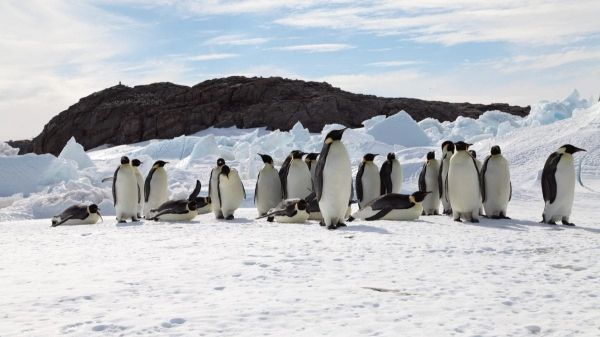The fate of emperor penguins is largely tied to sea ice, making them particulary vulnerable to warming.
Emperor penguins are some of the most striking and charismatic animals on Earth, but a new study from the Woods Hole Oceanographic Institution (WHOI) has found that a warming climate may render them extinct by the end of this century. The study, which was part of an international collaboration between scientists, published Nov. 7, 2019, in the journal Global Change Biology.
“If global climate keeps warming at the current rate, we expect emperor penguins in Antarctica to experience an 86 percent decline by the year 2100,” says Stephanie Jenouvrier, a seabird ecologist at WHOI and lead author on the paper. “At that point, it is very unlikely for them to bounce back.”
The fate of the penguins is largely tied to the fate of sea ice, which the animals use as a home base for breeding, feeding and molting, she notes. Emperor penguins tend to build their colonies on ice with extremely specific conditions—it must be locked in to the shoreline of the Antarctic continent, but close enough to open seawater to give the birds access to food for themselves and their young. As climate warms, however, that sea ice will gradually disappear, robbing the birds of their habitat, food sources, and ability to raise their chicks.
Jenouvrier and her team conducted the study by combining two existing computer models. The first, a global climate model created by the National Center for Atmospheric Research (NCAR), offered projections of where and when sea ice would form under different climate scenarios. The second, a model of the penguin population itself, calculated how colonies might react to changes in that ice habitat.
Continue reading at Woods Hole Oceanographic Institution
Image via Woods Hole Oceanographic Institution




